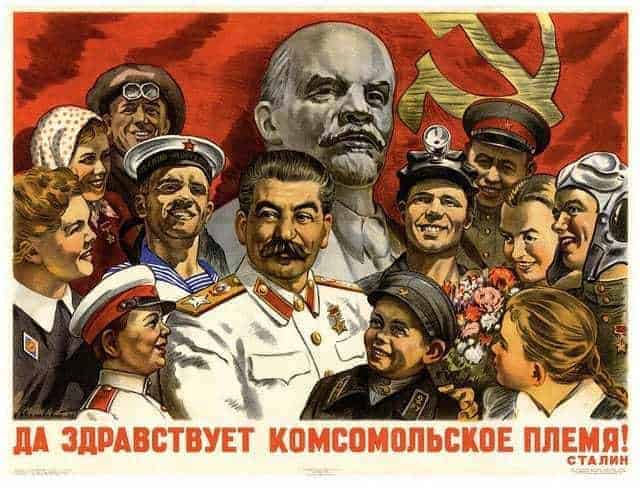Joseph Stalin’s rise to prominence began soon after the 1917 Russian Revolution. Although it was under the leadership of Lenin that the Soviet Union experienced its first wave of cultural, social, and political changes brought on by the revolution’s aftermath, Stalin was continuously working behind the scenes (and sometimes in front of them) casting his influence where he could. He was at the forefront of changes happening in Russia and worked alongside Lenin and Trotsky as one of the seven members of the first Politburo, established in 1917 with the purpose of managing the Bolshevik Revolution.

By 1918, Stalin harnessed a great deal of persuasion over the Russian military. He used it to carry out assassinations of counter-revolutionaries in order to protect Lenin and the Bolshevik cause. In 1924, following Lenin’s death, he successfully consolidated power. Ideas about Stalin and Lenin’s relationship became a useful tool of persuasion. Stalin was successfully able to cast himself as an extension of Lenin and his legacy.
In doing so, every idea, gesture, and statement Stalin made were implied to have at least in part come from Lenin, whose leadership Stalin characterized as “flawless.” The blending of identities endowed Stalin with capabilities similar to those granted to Roman Emperor Augustus.
In 12 BC, the Roman emperor Augustus was made Pontifex Maximus, a merging of the highest religious and highest political rank bestowed Augustus with immeasurable influence and power. Similarly, with the ghost of Lenin’s legacy, Stalin armed himself with a crown of absolute power and an inability to be wrong. It was the first of many phases of metamorphosis that the persona of Stalin would undergo before becoming Russia’s most loved and abominable cult figure.
During Stalin’s reign, the press played a vital role in projecting his image. They began referring to him as the Father of Nations, while labeling him a “genius”, “beloved”, “wise”, and “inspirational”. The press particularly liked to feature Stalin as a father figure, playing with children. It was a favored propaganda theme because it easily conjured a connection with the mass public that Stalin was a fearless and strong, but sensitive leader. Soviet propagandists purposely utilized elements associated with outside powers of influence to dissuade, manipulate, and weaken their base of loyalty.

